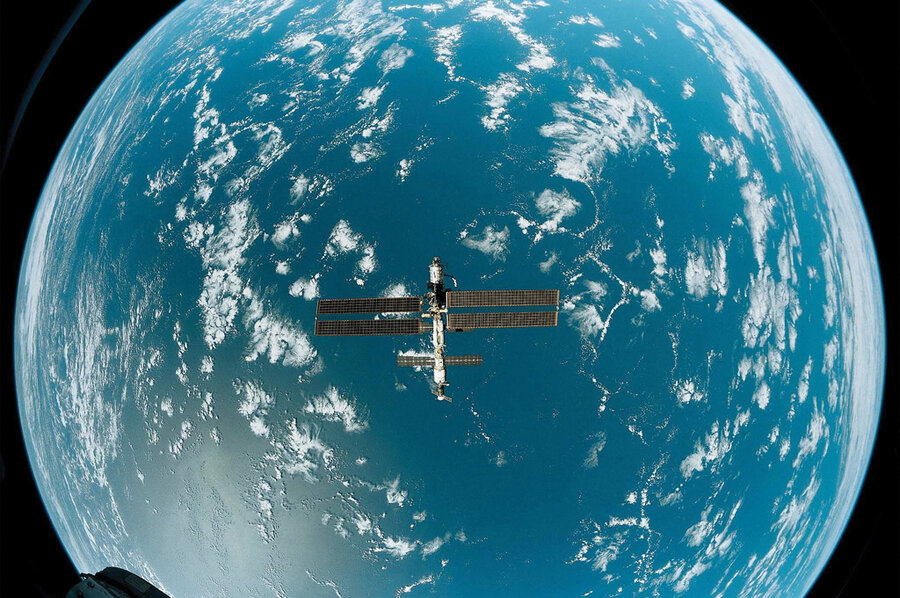The astronaut who learned how to see
Loading...
As a group, they defined cool. As individuals – from Yuri Gagarin to John Glenn, Sally Ride to Christa McAuliffe – they have shared the intelligence, confidence, ingenuity, and physical fitness that the writer Tom Wolfe rightly termed the “right stuff.”
Fewer than 600 humans have gone extraterrestrial in the 50 years of spaceflight. Most have carried out their missions with quiet competence. Some have skillfully saved the day. Gordon Cooper took over the controls and used celestial navigation to maneuver his crippled Mercury capsule to a pinpoint landing in 1963. Seven years later, the Apollo 13 crew slingshotted around the moon, ingeniously overcame a series of epic challenges, and endured a cold, harrowing return.
Some have uttered memorable lines (“That’s one small step....”); performed inspiring acts (the Apollo 8 Christmas Eve reading from Genesis); or fascinated us by floating in the void, bouncing on moon dust, or smacking golf balls from the lunar surface. For all the fun, we have always known how dangerous this work was. Eighteen astronauts have died in flight. Another dozen were lost in training.
The last shuttle flights end an era. We are still a space-faring species. Men and women will still be astronauts. But the new way of doing so is not quite clear.
The stories of any of the astronauts and cosmonauts our planet has produced in the past half century could be a book. All are overachievers. But at least one took overachievement to an intriguingly different level.
Story Musgrave flew on six space shuttle missions in a 30-year career with NASA. He had the requisite science background (degrees in math, chemistry, biophysics, and medicine), the aeronautic expertise (US Marine Corps aviator, free-fall parachutist), and the practical mechanical skill (good at fixing tractors, which he learned growing up in Stockbridge, Mass.). He was the methodical head repairman who helped repair the Hubble Space Telescope in 1993 and was known as “Dr. Details” for his meticulous preparation before each flight.
But here’s something else that distinguishes him: a practical love of literature and philosophy. When I visited him at his home in Houston in 1996, he showed me shelves filled with well-worn, annotated books ranging from St. Augustine to Virginia Woolf. When he sat in an evening literature class at the University of Houston, he kept three notebooks open – one for the lecture, another for what the ideas meant to him, and the third for how he might apply those ideas to the experience of spaceflight.
Dr. Details attacked the humanities in the same way he attacked extravehicular activity. Why? Because if you don’t prepare yourself, “the inner experience is not going to happen,” he said. Like the philosopher John Dewey, whose book “Art as Experience” he carried on a shuttle flight,
Musgrave always tried to stop periodically to be in the moment. He would turn off the lights and look at the stars or feel the feeling of weightlessness or observe the continents slowly turning below him.
Too many members of the space-traveling fellowship, he said, told him they regretted blasting off, shouting “wow” once in orbit, and then losing the whole amazing experience in the tasks at hand. It’s an observation, by the way, that can be applied to a lot more of life than just rocketry.
Musgrave left NASA 14 years ago and is now a consultant and motivational speaker, happy to advise future space travelers so that they get the most out of it. As he explained recently when I caught up with him by phone, space is now inside him: “I tried very hard to get space. It takes real work to have the best experience. Day and night passes, you see the aurora, shooting stars flash by, the moon races over the river of ocean. You don’t want to miss that.”





